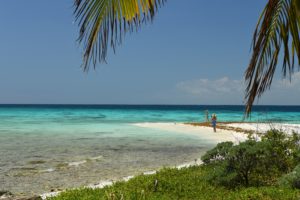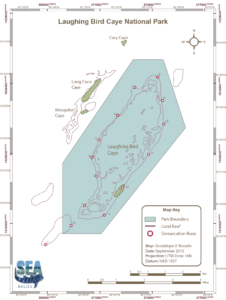Fragments of Hope, Belize
LAUGHING BIRD CAYE NATIONAL PARK
The national park is one of 7 marine protected areas declared as a UNESCO World Heritage Site in 1996. The protected area encompasses 10,119 acres and is considered to be one of the best examples of coral faro formation in the Caribbean (an angular atoll situated on a continental shelf). The long and narrow caye is located on the southern portion of the protected area and is known to attract thousands of visitors each year. Legal mandate for LBNP is held by the Forest Department and the area is managed through a collaborative partnership with the Southern Environmental Association (SEA).
The national park is part of the Belize Barrier Reef System and is an important tourism resource for adjacent communities. The protected area serves as a haven for conch, lobster, and finfish that contributes to the sustainability of the fishing industry by replenishing nearby areas. Littoral vegetation and herbaceous beach vegetation support a number of nesting birds and provide a stopping point for migratory birds. The beauty and high biodiversity of the national park provide significant socio-economic benefits to communities of the Placencia Peninsula.

